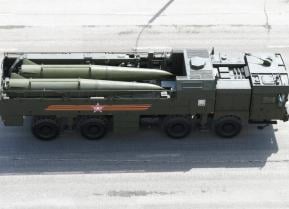Air Force Academy Is Building a Stealth Drone to Take on Stealth Fighters from Russia or China
"As far as we know, this is the first large 'stealthy' target drone," said Thomas McLaughlin, director of the academy’s Aeronautic Research Center. "We don’t know what goes on in less-public programs."
Cadets at the U.S. Air Force Academy are building a stealthy target drone to help pilots prepare for combat with Chinese and Russian stealth fighters.
But the drone could do so much more.
The U.S. military uses a variety of drones as targets in live-fire exercises. The Pentagon also has deployed drones in combat in order to distract enemy air defenses, most notably during the 2003 invasion of Iraq, when Navy drones dropped radar-foiling chaff.
Aerial targets have formed the basis of front-line drone types. In 2017, the Air Force paid San Diego drone-maker Kratos $41 million to develop one of the company's aerial target designs into a low-cost, pilotless strike aircraft.
Likewise, the cadets' drone could, in theory, evolve into a combat-ready warplane. "The appeal of an unmanned system is that you can use it in ways that you wouldn't a manned plane, such as sending it on more dangerous missions where you don't mind it being shot down," explained P.W. Singer, an analyst at the New American Foundation in Washington, D.C.
Cadets have been working on their version of the military's Fifth-Generation Aerial Target since the early 2000s. "For the first five years, we just did design studies," said Steve Brandt, who teaches aircraft design at the Colorado Springs academy. "Finally, in the fall of 2007, we said, 'Let’s build an aircraft.'"
The current version of the cadets' Fifth-Generation Aerial Target is 40 feet long, with a 24-feet wingspan and nine-feet-high vertical tails. "It’s the size of a T-38 trainer aircraft," Brandt said.
The academy Fifth-Generation Aerial Target design uses the same J85 jet engine that the T-38 does. Its smooth, sleek shape could help to reduce its visibility on radar.
"As far as we know, this is the first large 'stealthy' target drone," said Thomas McLaughlin, director of the academy’s Aeronautic Research Center. "We don’t know what goes on in less-public programs."
The Air Force also has contracted with Kratos and another company, 5-D Systems, to build their own stealthy Fifth-Generation Aerial Target drones for testing in 2019. The flying branch could pick one or more of the three designs for production.
The new target could join existing types performing a range of roles. Northrop Grumman supplies the military with a variety of custom-built targets. During the Vietnam War, variants of Northrop's BQM-34 drone hauled cameras, electronic sniffers and radar-jamming gear into enemy air space.
In the early 1970s, the Air Force modified a few BQM-34s to carry missiles and bombs for testing.
Today the Air Force operates remote-controlled QF-16s drones that Boeing produces using retired, early-model F-16s. Starting in 2015, the Air Force began working on computer code that quickly can transform the QF-16 into a robotic wingman for manned fighters such as the F-35.
"You take an F-16 and make it totally unmanned," is how Bob Work, then the deputy defense secretary, described the Loyal Wingman program in 2016. "The F-16 is a fourth-generation fighter, and [you] pair it with an F-35, a fifth-generation battle network node, and have those two operating together."
The loyal wingman F-16 could fly alongside the F-35 until the stealth fighter's pilot directed the unmanned plane to fly ahead in order to probe enemy defenses. The drone F-16 also could fire missiles or drop bombs at the pilot's command.
The same software could transform the new Fifth-Generation Aerial Target drone into a stealthy loyal wingman.
But before the Air Force Academy's drone can function as a target, much less as a front-line type, cadets first need to complete its development. Among other functions, the drone must reliably be able to self-destruct, in the event one gets damaged during a live-fire exercise and can't safely return to base.
"We’re trying to find a combination of flight-control inputs that will always cause the aircraft to enter a back-flip that will cause it to crash," cadet Joshua Geerinck said.
David Axe edits War Is Boring . He is the author of the new graphic novels MACHETE SQUAD and THE STAN.


